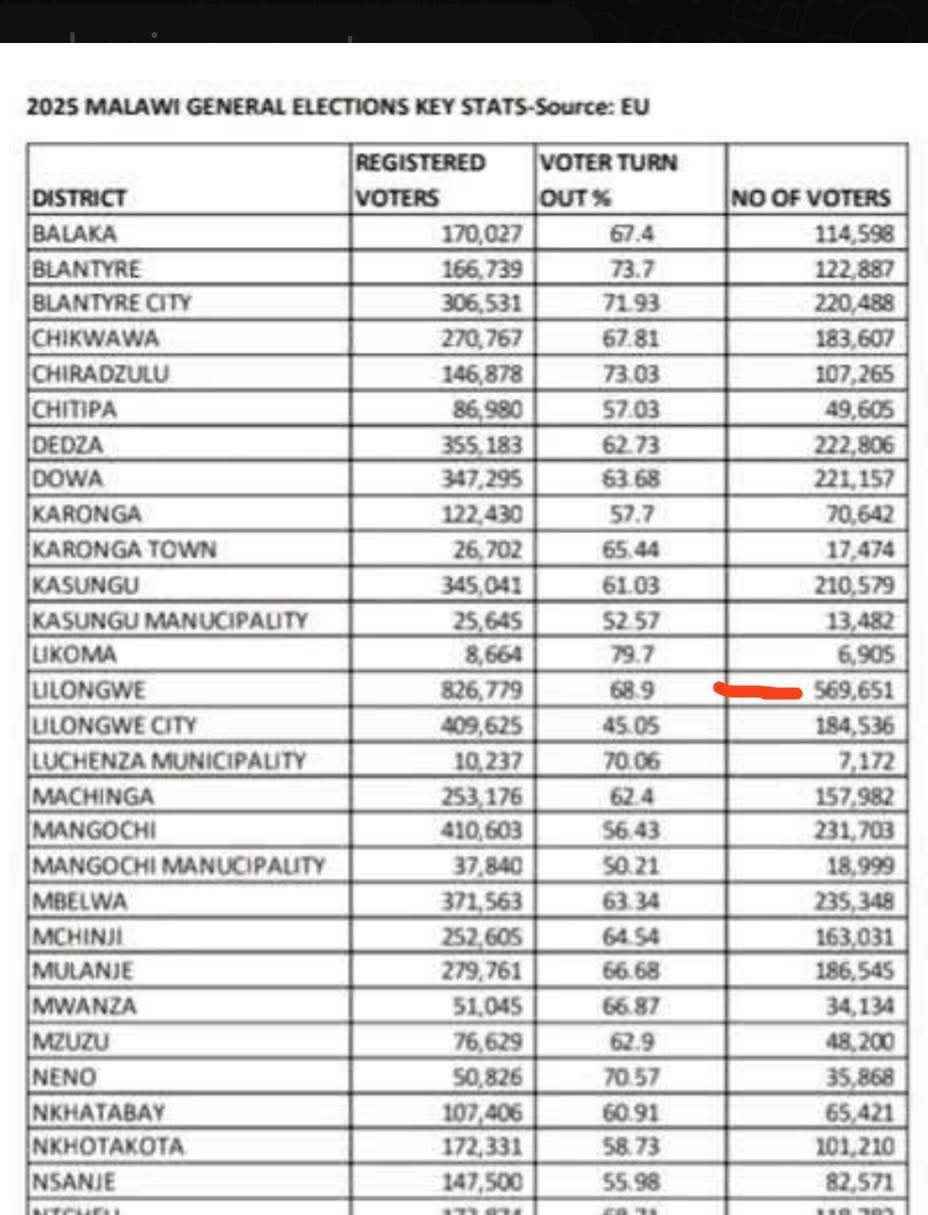By Burnett Munthali
Lilongwe Rural has recorded a high voter turnout of 68.9%, according to data tallying from the Malawi Electoral Commission (MEC) database, a figure independently validated by European Union (EU) election observers.
This turnout represents a total of 569,651 citizens who cast their votes in the recent election.
The figures are drawn from official MEC records, ensuring accuracy and credibility.
Observers note that any claims of higher or lower figures circulating publicly are likely influenced by peer pressure or partisan interests.
Such misinformation can create confusion among voters and undermine trust in the electoral process.
The EU observers emphasize that independent verification of MEC data provides clarity and strengthens public confidence.
In a politically competitive environment, it is crucial to rely on verified sources rather than anecdotal reports or unsubstantiated claims.
The high turnout in Lilongwe Rural highlights strong civic engagement in the constituency.
It also demonstrates the effectiveness of voter mobilization efforts and the commitment of citizens to participate in the democratic process.
Comparing this turnout to previous elections, Lilongwe Rural has shown a steady increase in voter participation.
In the 2019 elections, the constituency recorded approximately 62% turnout, while in 2020 by-elections the turnout was slightly higher at around 64%.
The 68.9% figure in this election marks a significant rise, suggesting growing political awareness and active engagement among residents.
Such increased turnout can have a decisive impact on candidate performance, particularly in close contests where every vote counts.
Regional trends indicate that Lilongwe Rural, situated in the Central Region, continues to be a key battleground with influence on overall electoral outcomes.
High participation in this constituency may signal broader shifts in voter sentiment, potentially affecting neighboring districts and shaping national results.
Electoral officials and observers alike stress the importance of transparency in sharing official results to prevent the spread of misleading information.
By presenting the verified data publicly, the MEC ensures that all stakeholders, including political parties and voters, have access to accurate figures.
The EU observers’ confirmation serves as an important check against false narratives and reinforces the legitimacy of the voting process.
For candidates and parties, understanding these turnout patterns is crucial for planning campaigns, allocating resources, and addressing voter concerns.
As Malawi continues to strengthen its democratic institutions, accurate reporting and independent oversight remain key pillars for credible elections.
The message for citizens is clear: verified results from the MEC, supported by international observers, are the most reliable source of information.
Ultimately, the 68.9% turnout in Lilongwe Rural reflects the active participation of Malawians in shaping their governance and underscores the growing political maturity of the electorate.
Kalikonse tikawona — when we all see the verified results, there can be no doubt about the true outcome of the vote.




